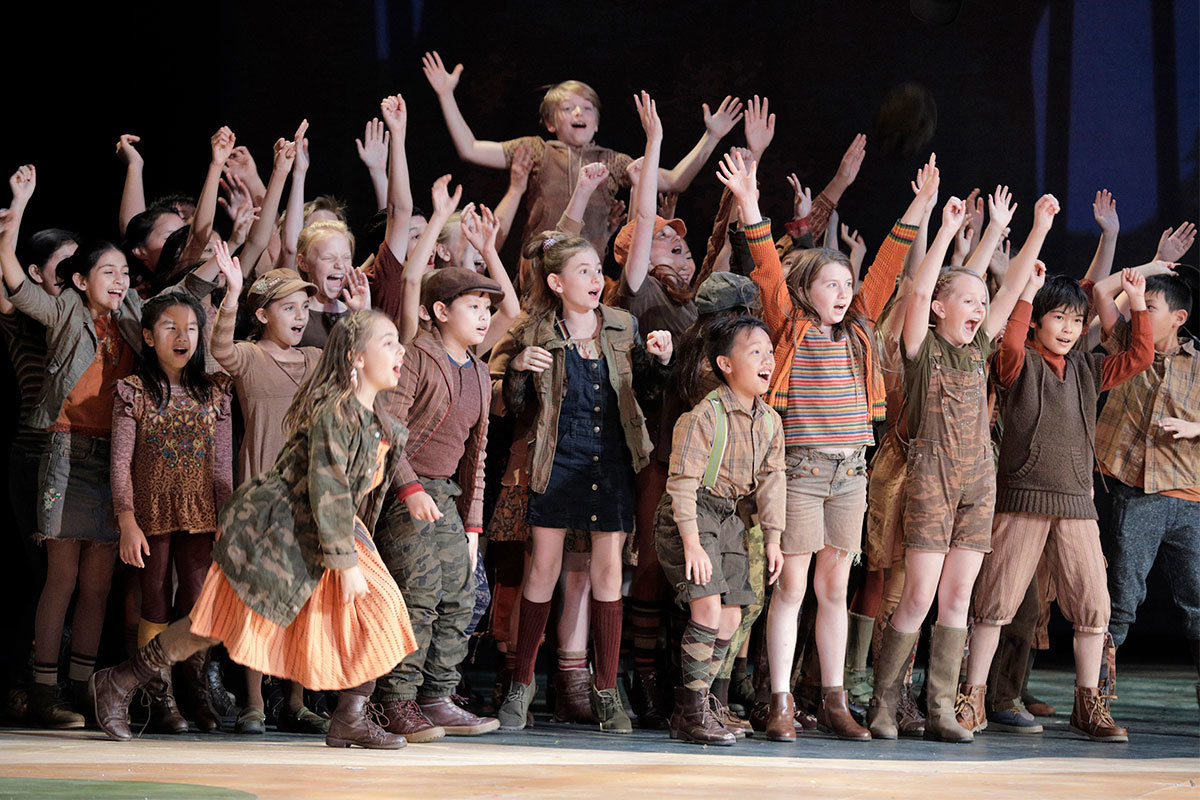Review: HANSEL AND GRETEL at Dorothy Chandler Pavilion


On Saturday evening November 17, 2018, Los Angeles Opera presented the premiere performance of HANSEL AND GRETEL. The opera's original libretto is steeped in nineteenth century culture but Richard Sparks' translation, originally for the 2006 LA presentation of the opera, brought the text up to date and made it most appealing to contemporary children.
Some of Sparks' rhymed translation is an English version of the original libretto by the composer's sister, Adelheid Wette, but where the text reflects her religious views, with 14 angels watching over the children through the night, he substitutes references to the beauties of nature and the protective sprits seen onstage.
Director, Scenic and Costume Designer Doug Fitch made magic on the stage and many of the children in attendance had stars in their eyes when they left the theater. The show's pre-curtain was a flat surface showing a forest home with a brook and several trees. Smoke comes out of the chimney, water in the brook moves and a mysterious broomstick flew in and out, around the house and surrounding landscape.
The curtain divided into several pieces that moved downstage. Hansel and Gretel were playing and dancing as they sang about their need for food. Some of what was originally thought to be scenery in front of the house danced with them. When the children's mother returned home, only her angry face was projected on the house surface. Later, colorful animals with fantastic shapes and huge glowing eyes populated the forest. As the sun went down, huge red toadstools along with the animals kept watch over the children and the Sandman showered them with the glitter of repose.
After intermission, Hansel and Gretel awoke at the call of a Dew Fairy who glowed like a ray of sunlight atop a tall tree. A gingerbread house appeared and food dropped in front of the children. Dressed in a short pink tulle skirt, Doug Fitch's mild-mannered Witch once might have been a blonde bombshell and her appearance, all in faded pink, did not frighten the small children in the opera house. Gretel wore a simple skirt and Hansel wore plain brown short pants. Only the Sandman and the Dew Fairy had fancy, sparkling outfits.
Fitch's inventive additions to the basic story made this performance a visual treat for the young and a delectable musical entree for adults. Kudos to Aerialist Kelsi Cassidy, who rode a broomstick several stories up across the night sky. After the Witch had been shoved into the oven, I waited for it to explode, but it didn't. I guess there were safety issues involved.
Liv Redpath, a member of the Domingo-Colburn-Stein Young Artist Program who portrayed Santa Fe Opera's 2018 Zerbinetta, was a demure Gretel with sparkling high notes. Her voice blended well with the warmer sound of mezzo-soprano Sasha Cooke who will sing the title role of ORLANDO with San Francisco Opera.
As the Witch, Susan Graham's voice was disguised most of the time and she created a memorable character. Her Witch was an evil creature who looked quite pleasant, wore non-threatening clothing and seemed almost normal at first. Perhaps Graham and Fitch taught a lesson there.
Melody Moore was a harried Mother who may have wanted to be rid of children she could not feed. In this story, the Mother may be as evil as the Witch. In his pre-performance lecture, James Conlon suggested having one artist sing both roles. I'd love to see Susan Graham, Pittsburgh Opera Witch Marianne Cornetti, or the Met's Mother, Dolora Zajick, do both parts.
Craig Colclough was an impressive Father whose beer aria brought comic relief to an otherwise sad moment. With dark but resonant tones, he projected words and music into the auditorium with pristine clarity. It was he who suggested searching the woods for the children. Director Fitch did not indicate whether or not the Mother would have done that on her own.
Two other members of the Domingo-Colburn-Stein Program, Taylor Raven and Sarah Vautour, sang the Sandman and the Dew Fairy with dulcet tones that make me want to hear more of their artistry.
Although the libretto makes it an appropriate first opera for children, musically, this opera with its fully fleshed-out orchestration appeals to adults. Composer Engelbert Humperdinck worked with Richard Wagner on PARSIFALand was influenced by his works. HANSEL has some orchestral parallels with LOHENGRIN and THE FLYING DUTCHMAN, for example.
With an orchestra of more than 60 instruments, Music Director James Conlon had all the players he needed to show the exquisite delights of Humperdinck's monumental score. Their sound was magnificent. I think the maestro and his players had a great time playing this score, too. In the intermission, I spoke with some parents and their children. All of them were enjoying the performance and some of the youngsters indicated a budding interest in opera. HANSEL AND GRETEL will be at the Dorothy Chandler Pavilion until December 15, 2018.
Photography by Cory Weaver and Karen Almond for Los Angeles Opera
Reader Reviews

Videos
